Utah’s legislative redistricting committee held its first public meeting on Monday with just three days left before it has to submit a map for public comment.
Lawmakers reviewed legislation during the meeting that would narrow the parameters set by Proposition 4, while experts explained what drawing new districts entails and why Salt Lake County has to be split.
The meeting came one day after the committee released five proposed congressional maps for public comment.
To open the meeting, one of the committee’s chairs, Sen. Scott Sandall, R-Tremonton, said the committee is meeting “in compliance with the court’s orders and under protest.”
A district court judge threw out Utah’s congressional maps following a lawsuit brought by proponents of Proposition 4, who say lawmakers did not follow the parameters set out in the proposition. Republican lawmakers say the state Constitution grants legislators the authority to draw congressional maps.
The “under protest” comment from Sandall drew a heated response from the Democratic lawmakers on the committee and from Utahns speaking during public comment.
“You are public servants and ensuring fair representative districts, one person, one vote, as reference to the beginning presentation is a pillar of our democracy. From my perspective, you should be honored to be part of the process and have the opportunity to correct clear mistakes made with previous maps,” said Sandy resident Bonnie Magnusson.
How did we end up here?
This map redrawing comes after a Utah Supreme Court ruling last year saying the Legislature shouldn’t have been allowed to amend 2018’s Proposition 4, also know as the Better Boundaries initiative.
Last month, 3rd District Court Judge Dianna Gibson ruled that with the initiative’s standards back in place, the existing congressional map cannot be used in the 2026 election since it does not meet Proposition 4’s requirements. The ruling requires the congressional map to be redrawn.
“Proposition four is about the process not about an outcome,” Sandall said at Monday’s meeting. “We are in that moment in time where we are trying to follow the process as best we can.”
Debate over how proposed maps should be analyzed
One of Prop 4’s requirements is that “The Legislature and the Commission may not divide districts in a manner that purposefully or unduly favors or disfavors any incumbent, elected official, candidate or prospective candidate for elective office, or any political party.”
In order to do this, the proposition allows the Legislature to use “judicial standards and the best available data and scientific and statistical methods, including measures of partisan symmetry.”
During the meeting Sen. Brady Brammer, R-Pleasant Grove, presented proposed legislation that would codify how the new maps are analyzed for partisan symmetry.
Under the bill, partisan symmetry would be tested through a “partisan bias” test to evaluate whether redistricting maps unduly favor or disfavor a political party.
Democrats raised concerns about the proposal, saying it is too narrow an interpretation of what is required by Prop. 4.
Senate Minority Leader Luz Escamilla, D-Salt Lake City, said in last month’s ruling Gibson said the Legislature could use as many measures as it wants.
“So it concerns me when we’re saying, ‘Oh, we’re running the test and we’re running a pass or fail grade, but we’re only doing it on partisan bias,’” Escamilla added.
Brammer said that the court specifically gave the Legislature the discretion to decide which standards, methods and data are used in following this portion of Prop. 4.
Why Salt Lake County has to be split into multiple congressional districts
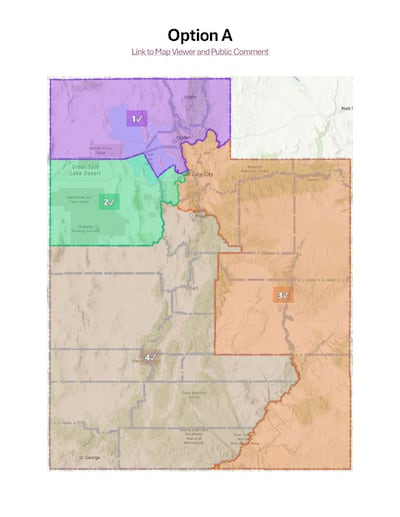
One major concern with the congressional map that was recently thrown out, is how it divided up Salt Lake County and the municipalities within. During the meeting an expert explained why it is necessary to split up Salt Lake County while drawing congressional maps.
Sean Trende, an elections analysis expert who analyzed the five maps that were released by the committee on Sunday, explained the splitting of Salt Lake County.
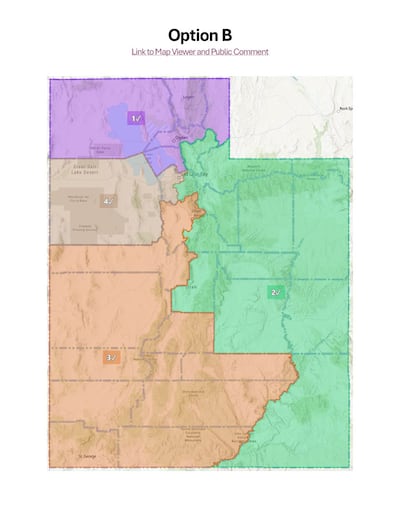
Trende defined the ideal population of districts as the state’s population divided by the number of districts. Utah’s total population is 3,271,616 and divided by four the ideal population in each district is 817,904.
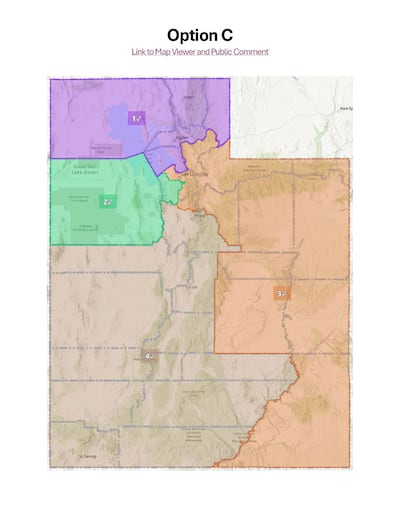
Salt Lake County’s population is 1,185,238, bigger than the ideal population, meaning the county has to be split in order for the state’s population to be divided evenly between the four congressional districts.
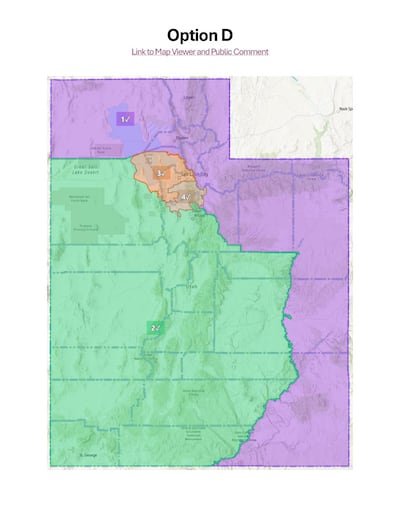
One of the standards set by Proposition 4 is minimizing the division of municipalities and counties across multiple congressional districts. But what makes this difficult is that Utah has four cities that cross county lines: Bluffdale, Draper, Park City and Santaquin.
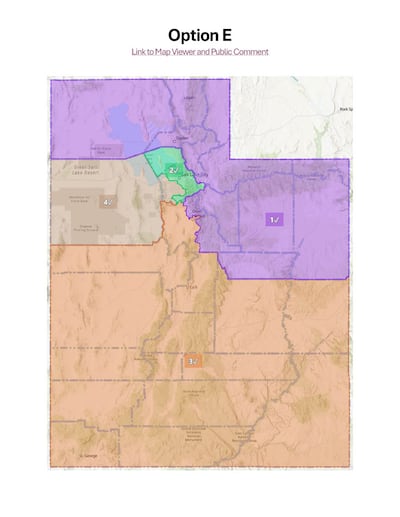
Under Proposition 4, keeping municipalities together is prioritized over keeping counties together.
According to Trende, all five proposed maps are equally populated, symmetric and minimize splits of municipalities and counties, though there are still a number of cities that are split.
During the public comment period, concerns were raised over the cities — such as Pleasant Grove and West Valley City — that would be split in the proposed maps. There were also a number of concerns raised over Brammer’s proposed legislation.
What comes next?
The committee will hold a second public meeting on Wednesday at 11 a.m. before it has to present a final map on Thursday, Sept. 25.
For 10 days between Sept. 25 and Oct. 5, there will be a public comment period for the map. The state Legislature will then hold a special session on Oct. 6 to vote on the map, that same day is the deadline for all parties — including the Legislature — to submit their maps to the court.
Gibson will then consider the maps that have been submitted. The final map has to be chosen by Nov. 10, which is the lieutenant governor’s deadline to receive a new map in time to prepare for the 2026 midterm elections.
Those looking for more information on the redistricting process and for how to comment on the proposed maps can go to the legislative redistricting website.

